Mount Mitake In Tokyo - Explore Scenic Spots And Spiritual Traditions

Mt. Mitake is located in Tokyo's western area and can be easily reached from the city center in one hour and a half by train. A popular destination for nature lovers, Mt. Mitake boasts not only beautiful views but also amazing old spiritual traditions.
Tokyo has the image of an immense, high-paced metropolis, but an interesting fact about it is that it includes large nature areas such as whole mountains and even islands in the Pacific Ocean.
Mount Mitake (929 m), located in the Chichibu Tama Kai National Park in the west of Tokyo, is one of the prominent mountains easily reachable from the center of the city. Revered as a sacred mountain in the past, this area used to be a center of religious practices. Nowadays, it is a popular hiking destination bustling with visitors at any time of the year.
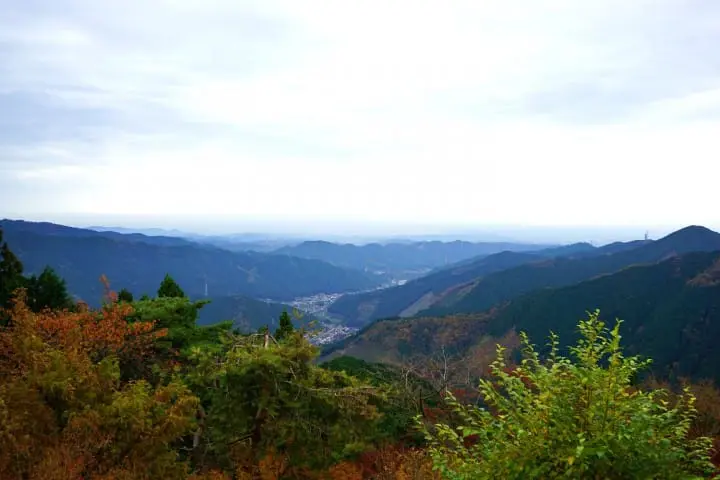
What makes this mountain so appealing to nature lovers is the beauty of the views it offers each season, which are especially gorgeous in the spring and autumn. In addition to this, however, there are the spots that are unique to Mount Mitake, such as the Musashi Mitake Shrine, waterfalls, fascinating rock formations, as well as local shops and dining places. Being relatively easy to climb, this mountain is the ideal destination for a leisurely outing.
If you'd like to truly experience the beauty of the season you're visiting in, how about getting out of the city for one day and spend a few hours on Mount Mitake? The beautiful views will leave a deep impression on you, giving you an insight into the Japanese sense of the seasons. Please read on for some suggestions on how to spend an enjoyable day on Mt. Mitake.
8:19 - 9:46 - Going from Shinjuku Station to Mitake Station
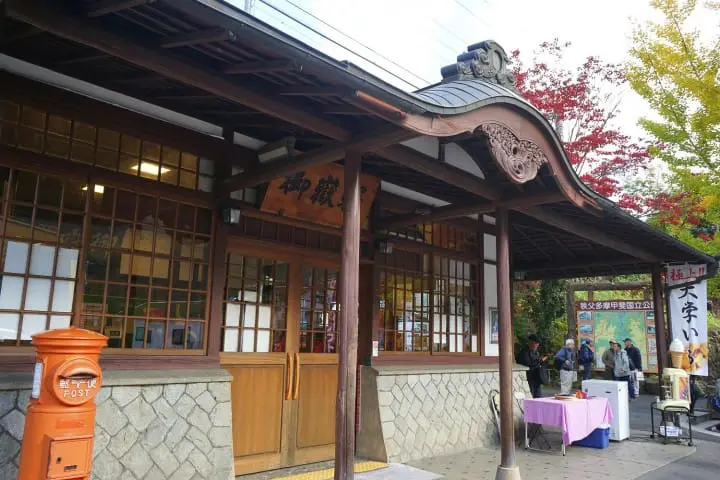
We recommend you depart early from Tokyo, in order to be able to make the most of your time on the mountain. From Shinjuku Station you can take the 8:19 Chuo Line train bound for Ome. You'll need to change trains just one time - from the express to a local train, and you'll be reaching Mitake Station at 9:46.
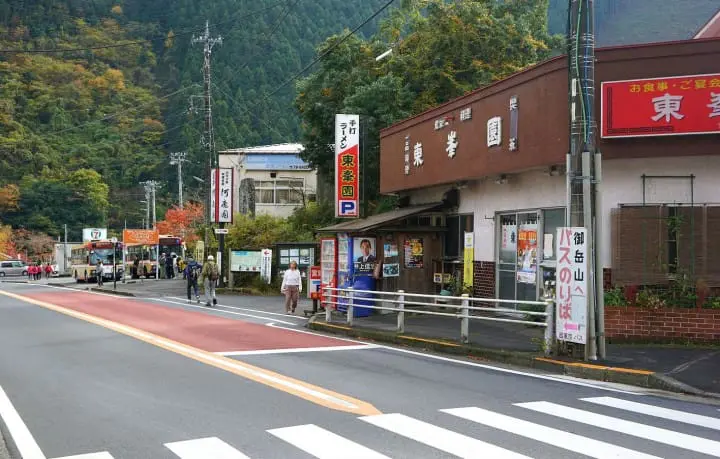
From here, you'll need to take a bus that will bring you to the cable car station. The bus stop is located right in front of Mitake Station to the left.
A No. 10 bus heading to Takimoto Station (cable car) departs at 10:03 and reaches the station in about 10 minutes.
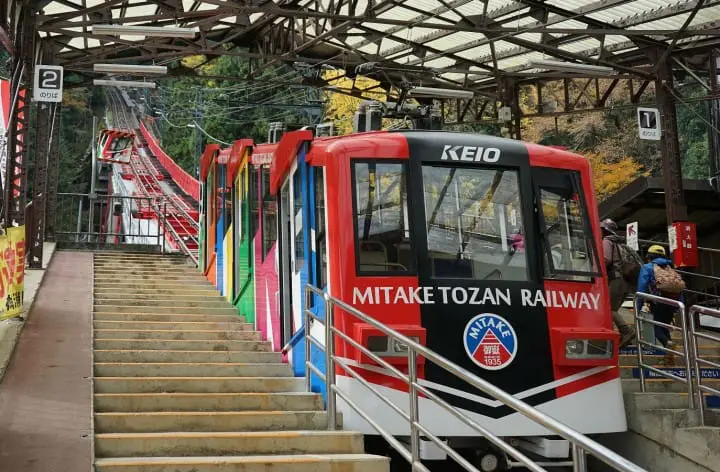
From Takimoto Station, you'll be taking the cable car halfway up the mountain. Departing at 10:21, the cable car will reach the area halfway up in about 6 minutes.
At Takimoto Station, you can pick up pamphlets with hiking route maps and information on Mount Mitake, as well as local snacks to energize yourself for the hike.
10:30 -- Enjoy the View from Mt. Mitake Observatory
Once you reach Mitake Station, take a few minutes to enjoy the view from the observatory! On a clear day, you can see as far as Tokyo and even the Boso Peninsula in Chiba prefecture!
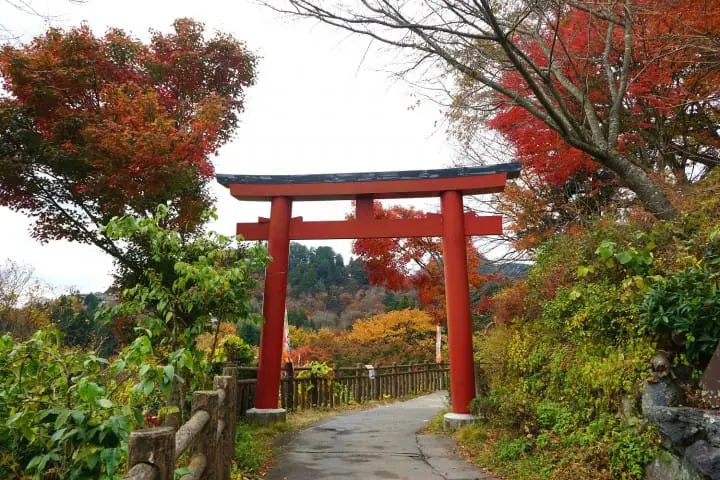
When you're ready to start your exploration of Mount Mitake, head for the path marked by a large red torii gate. This gate is a symbol of the fact that the area you are about to enter is under divine protection.
You'll first pass through the Oshi-shuraku, or the Shrine Priests' Village, an area that was originally inhabited by the ascetics and shrine priests living on the mountain. Many of the buildings in this village are accommodation facilities for travelers who wish to stay overnight or for a few days on Mt. Mitake. There are also shops and dining places offering local dishes for the hikers to enjoy.
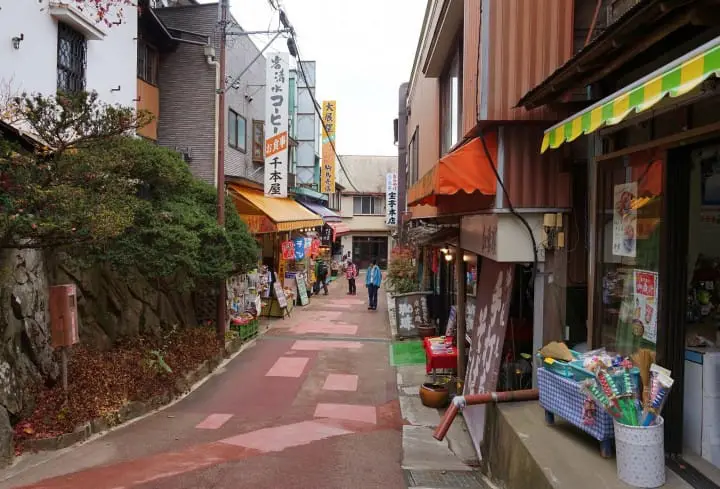
On your way to Musashi Mitake Shrine, you'll pass through this shotengai (traditional shopping street). Because a three-hour hike lies ahead, how about buying some snacks and refreshments? You can either enjoy them on your way or at one of the rest areas along the hiking route. Please make sure you have a light snack and water with you, as there are no shops or vending machines on the hiking trail.
11:00 - 11:20 -- Musashi Mitake Jinja - A Shrine with Ancient Roots
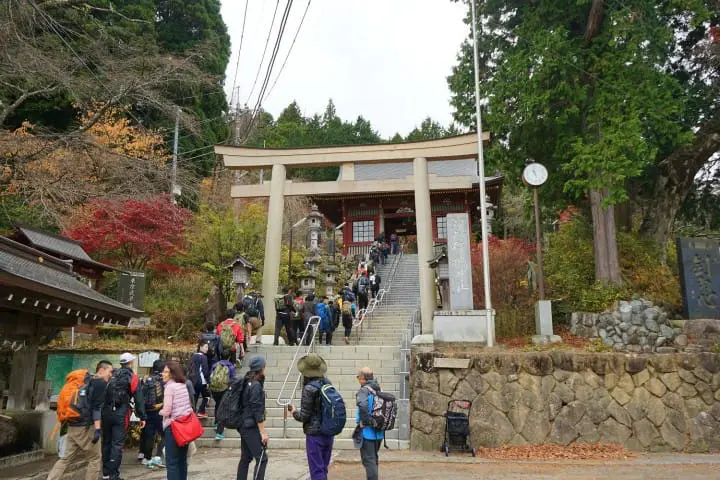
Musashi Mitake Shrine is located on the summit of Mount Mitake. The origins of this shrine go back to the ancient times and it flourished as a center for shugendo (*1) ascetic practices.
*1... Shugendo: A set of syncretic beliefs and ascetic practices that borrow elements from both Buddhism and Shintoism.
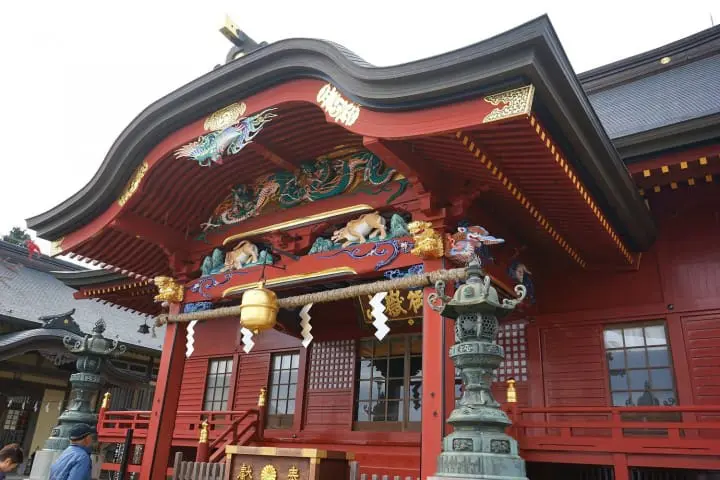
There are several buildings within the shrine grounds. Among them, the Main Hall with its an impressive architecture and the Treasure Hall (shown in the picture below) which houses precious objects with a rich historical background are particularly beautiful.
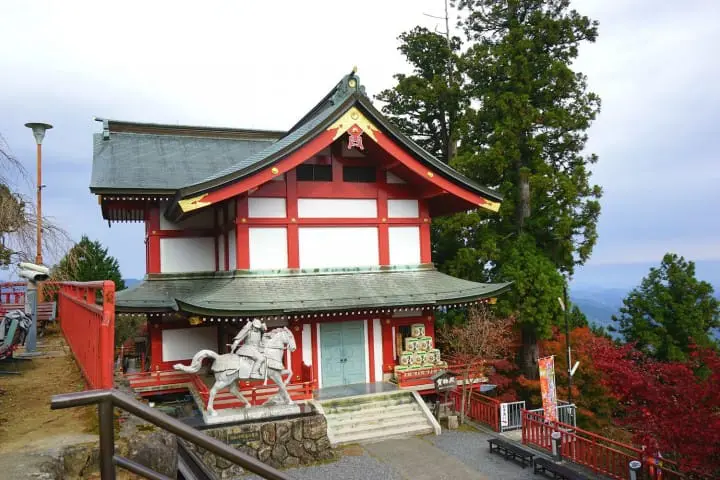
Mitake Shrine is famous for its kagura (*2) performances. Ancient styles of kagura (sacred dances) which cannot be seen anywhere else have been preserved here at Musashi Mitake Shrine. Hundreds of visitors come from far away to see these performances. The night kagura is especially fascinating and many of the ones who visit here for the kagura stay overnight at one of the local inns.
*2... Kagura: sacred dances, performances dedicated to the gods.
11:25 - 14:10 -- Hiking on Mt. Mitake: Waterfalls and Amazing Rock Gardens
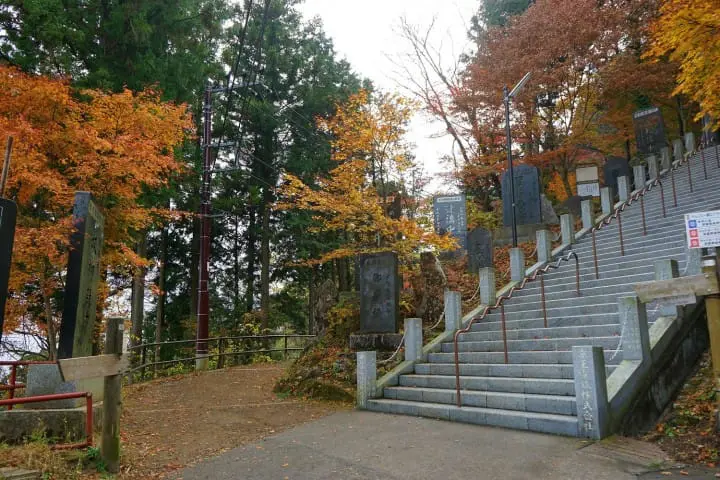
To begin your hike on Mt. Mitake, return to the base of the concrete staircase leading to Mitake Shrine, and take the unpaved path that goes behind the stairs.

The gentle mountain path will lead you through the woods to the Nagaodaira Observatory, an open space that offers a great view over the mountain and the city. This is also a place where you can rest and take in the beauty of the area.
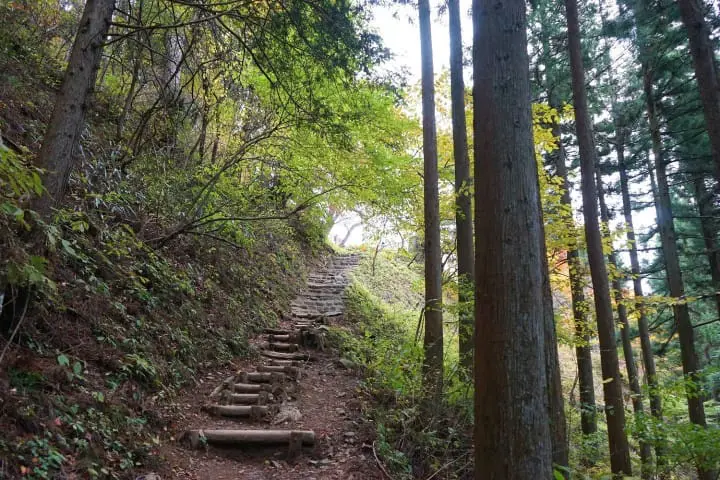
In order to reach Nanayonotaki, one of the two famous waterfalls on Mount Mitake, you will need to go down a mountain path. Please be careful as the path becomes steep.

It takes about 30 minutes to reach Nanayonotaki but the sight of the beautiful waterfall will be most rewarding. The sound of the stream, which is called Yozawa River, is clear and soothing, and you'll feel refreshed just by being here.

A one-hour long hike along the Yozawa River upstream will take you through the Rock Garden, an area stretching over 1.5 km that features stunning rock formations of various sizes.
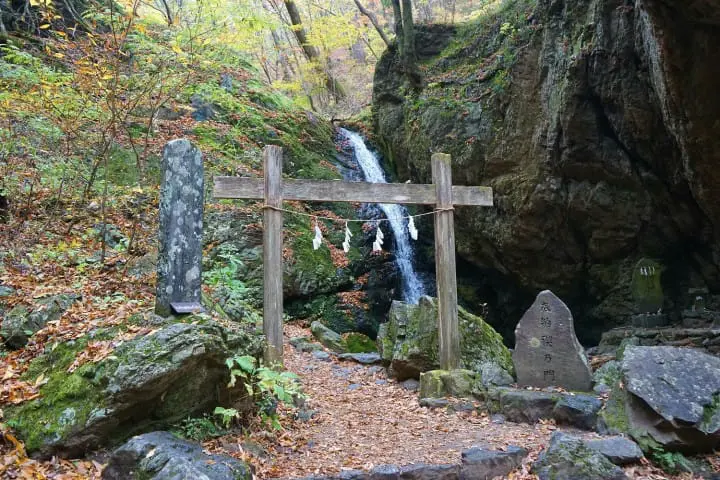
At the other end of the Rock Garden, you will reach Ayahironotaki Falls, the second waterfall Mt. Mitake is famous for. Regarded as a sacred place, this area is used for waterfall training by mountain ascetics and monks.
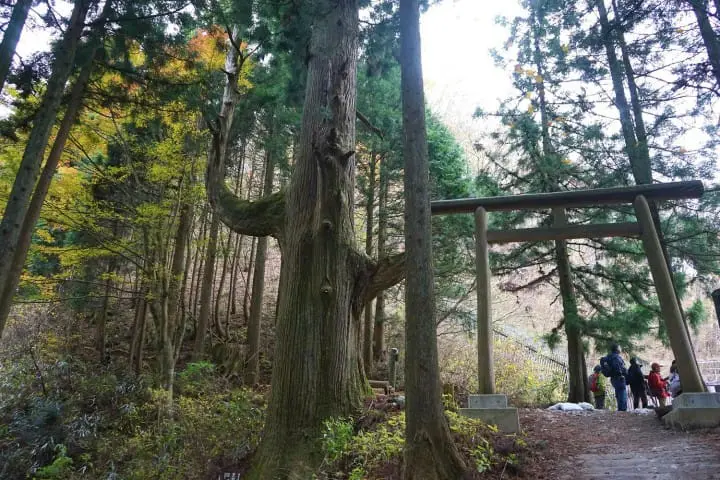
From the Ayahironotaki Falls, a gentle path takes you back to the entrance to Mitake Shrine. In addition to beautiful views of the mountain and of the forest, this path features stunning spots of scenic beauty, such as the Tengu no koshikake sugi ("The Cedar of the Tengu"), a cedar with a peculiar shape. In Japanese culture, the trees that have an unusual shape are believed to be dwellings of the gods. This is why this cedar is highly revered as a sacred tree.
These and other wonderful places can be seen along the hiking trail on Mt. Mitake, which is a loop around the mountain taking around three hours to complete. The views are so beautiful that you'll feel blessed for being able to spend a few hours like this in the heart of the forest.
14:20 - 15:20 -- Lunch at Korisan, a Tanuki-themed Cafe
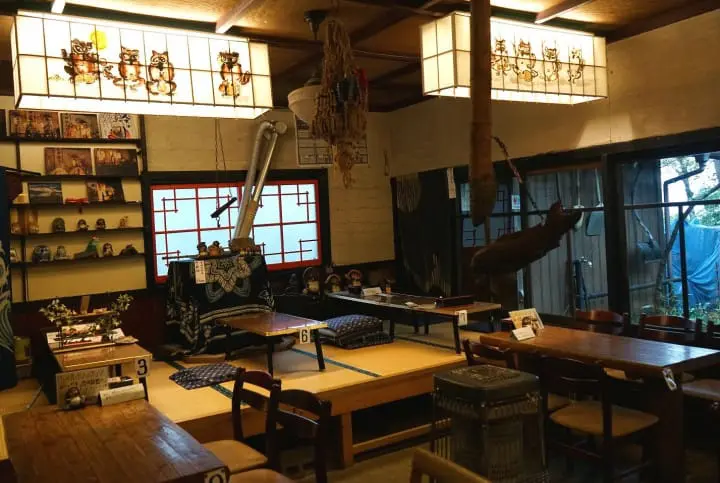
After the hike, take a lunch break at one of the dining places within the shotengai in the village. We recommend cafe Korisan, a dining place that has been in business in this area for three generations already.
The store has a warm, cozy atmosphere, enhanced by the many images and objects showing cute tanuki. Tanuki (Japanese raccoon dogs) are considered good luck bringers in Japanese culture.
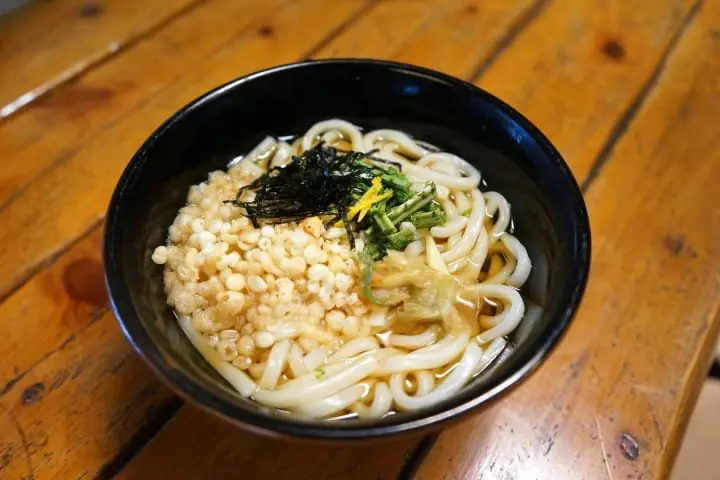
At Korisan, you can enjoy a wide variety of dishes, but udon noodles are their specialty. We tried their Tanuki Udon (800 yen), a tasty and filling dish made with noodles and vegetables.
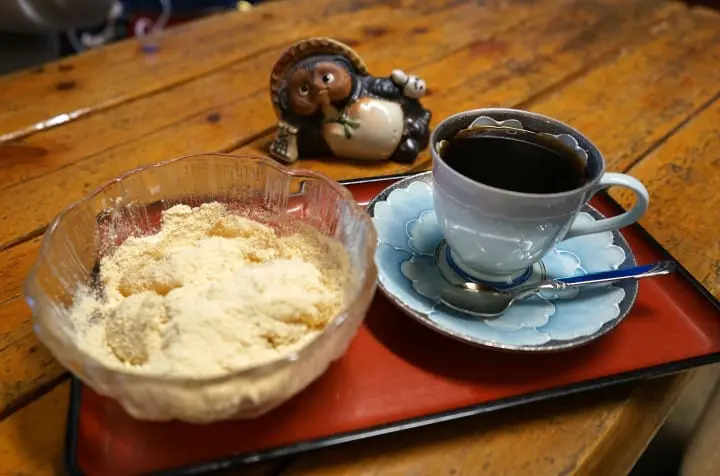
The shop is actually renowned for their Warabi mochi (sweet rice dumplings) covered in kinako (roasted beans) powder, so we just had to try it. It tastes heavenly! And it goes very well with coffee too.
15:30 - 16:00 -- Looking for Souvenirs at Chimotoya
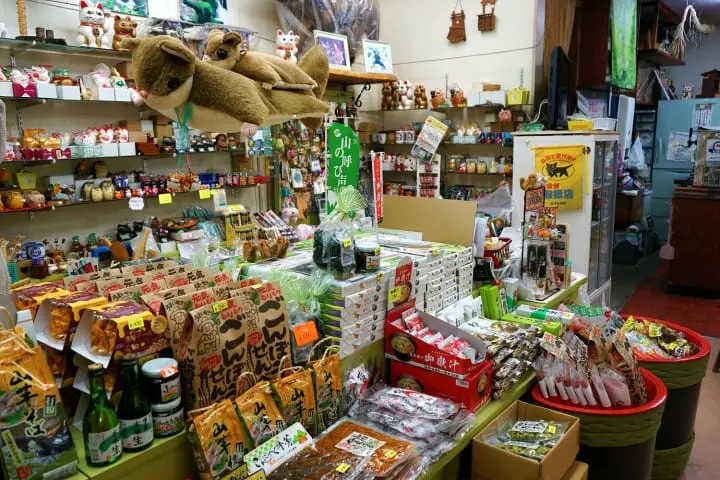
Before returning to the cable car station, how about looking for some nice souvenirs of your hike on Mount Mitake? We can recommend Chimotoya, a shop located in the shotengai before the entrance to Mitake Shrine. They have a great variety of sweets, snacks and other local food items, as well as small objects and postcards that make great souvenirs.
If there is something specific to Mt. Mitake that is wasabi (Japanese horseradish), an ingredient that is cultivated in this area. At Chimotoya, you can find wasabi-flavored snacks and pickles that are ideal to take back home as souvenirs.
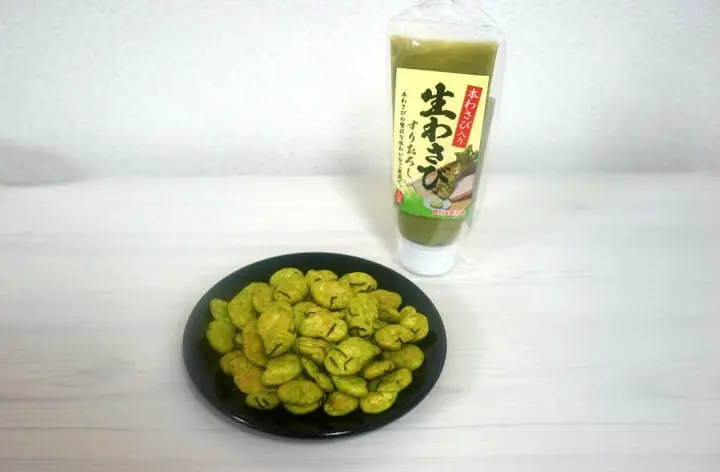
We couldn't resist trying the fresh wasabi made on Mt. Mitake and the wasabi-flavored beans, a very delicious snack. Their taste was so refreshing and so different from anything wasabi that we had had before that we can definitely recommend them as excellent souvenirs from Mt. Mitake.
16:40 -- Back to Tokyo or Stay Overnight
To go back to the base of the mountain, please try to make it to the cable car which departs at 16:40.
At the end of the exciting day spent on Mt. Mitake, you can either return to Tokyo from Mitake Station or stay overnight in the area and continue to explore it the next day. Just 10 minutes away by train from Mitake Station in Ome, there are inns and onsen facilities.
If you're thinking of staying overnight, how about enjoying the services of an onsen facility? There's nothing like a hot bath to cure one's fatigue after a day of dining in Japan.
Enjoy Your Explorations of Mt. Mitake!
If you would like to experience a day out in nature, Mount Mitake is a great choice. In addition to stunningly beautiful views, you get to feel the atmosphere of a place that is regarded as sacred in Japan's spiritual tradition. At the sight of the majestic forest, of the valleys, streams, and waterfalls, you'll be able to feel for yourself the reason why this mountain got to inspire spiritual beliefs and legends. It is a truly mystical place that any nature lover will enjoy.
Mount Mitake Route Summary
Shinjuku Station → Mitake Station → Takimoto Station (cable car) → Mitakesan Station (cable car) → Musashi Mitake Shrine → Nagaodaira Observatory → Nanayonotaki Falls → Rock Garden → Ayahironotaki Falls → Korisan (lunch) → Chimotoya (souvenirs) → Mitake Station
Transportation expenses (round-trip): around 3500 yen
Lunch, snacks, souvenirs etc.: around 3000 yen
Supported by Tokyo Convention&Visitors Bureau
Web content editor and travel writer at MATCHA.












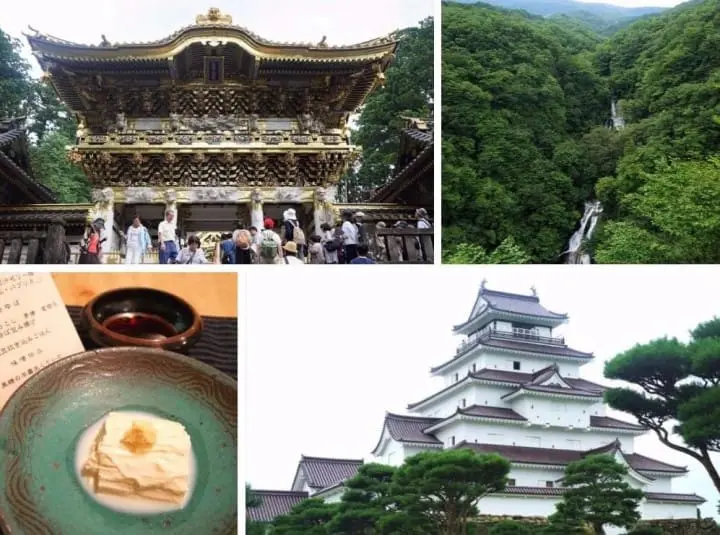


























![[2026] Top 5 Strawberry Picking Spots in Tokushima, Naruto| Farms and Access Guide for January to May](https://resources.matcha-jp.com/resize/720x2000/2025/03/06-227165.webp)



